|
At Food Fur Life, we advocate for and encourage the feeding of raw food. That said, a (properly balanced) home prepared food made with all human grade ingredients, even if cooked, will always – in our opinion – be a superior choice to any commercial canned or kibble. This is why we formulated EZComplete fur Cats to properly balance food whether the meat used with the premix is cooked or raw. The premix powder includes both pancreas and digestive enzymes so all kitties fed food made with our premix are consuming those needed digestive enzymes. We understand there may be personal reasons to cook. With that in mind, we share the information in this article to help you make informed choices: whether or not to cook, and if cooking, which method will both suit your lifestyle and be most healthful for your kitty.
When we first entertain the idea of homemade food for our pets, it’s quite common to have questions, if not concerns, about raw feeding and bacteria. Unless we are lucky enough to have a veterinarian that is knowledgeable about raw feeding, these questions often grow into fears once we chat about the diet change (if the notion of homemade food is not completely discouraged). The only consideration when it comes to cooking for our pets, typically, is the fear-based potential for bacterial contamination. We treat the question "to cook or not to cook?" as if cooking is benign, and has no impact apart from making food “safer.” Sure, we all know we need to account for nutrient loss. But the decision to cook for our pets is not so straightforward. There are other important factors to consider – especially if it is cancer or an inflammatory disease that prompted us to explore making food for our furry family members. Having eaten cooked food for anywhere from 400,000 to 1.8 million years, humans have adapted to eating cooked food. Our pets, naturally hunters and scavengers, have not. In their evolutionary timeline, commercial foods only became a part of their diet full time within the last few decades. Cooking their food may have unintended health consequences, as they are perfectly designed for eating not just raw meat and organ, but what we would consider contaminated raw meat and organ. Of course WE would likely get sick if we ate raw meat contaminated with bacteria. But this an instance where we should not humanize our pets. Veterinarians are quick – and rightly so – to point out the nutritional needs of our pets are quite different than our own. Of course those differences extend to the defense systems of our bodies versus those of our pets. Of course our pets are well adapted to their natural evolutionary diets of hunting and scavenging. And of course our pets have biological mechanisms in place to protect them from this risk that we do not. We address this in our article “Why You SHOULD Feed Your Immune Compromised Cat Raw Food.” So what is the real difference between raw and cooked? Cooking:
Why are enzymes so important to our pets? Enzymes are present in all living animal (and plant) cells: they are the catalysts of all naturally occurring biochemical processes that take place in our (and our pets’) bodies. Without enzymes, we cannot utilize the nutrition we eat, and neither can our pets. The processes that enzymes catalyze would take so long without them, we couldn’t survive. As we have discussed in numerous articles, cats are not “just” carnivores, cats are metabolically inflexible hypercarnivores. Biologically, cats have made no adaptations to eating anything other than their natural diet. And that diet is raw. As Dr. Jean Hofve explains in the Spring 2012 issue of IVC Journal in her article, “Enzymes,” “The thousands of enzymes produced by the body aid in a wide variety of chemical reactions. There are two major classes of enzymes: metabolic and digestive. Digestive enzymes are produced primarily in the pancreas and released into the duodenum to help digest food coming from the stomach. The intestines themselves also secrete amylase and other digestive enzymes.” Dr. Hofve goes on to note that “Research in animals has shown that the production of digestive enzymes is independent of diet. That is, animals are biologically programmed to produce specific types and amounts of digestive enzymes in response to food ingestion, regardless of what food they actually eat. Only major evolutionary shifts, such as changing from omnivorous to insectivorous lifestyles, affect these systems. Our carnivorous pets have not, and cannot, adapt their digestive functions to processed diets, which, after all, have only been widely used for a few decades.” [Bold, our emphasis] In the wild, cats eat the entire animal. Their digestive and metabolic systems are designed to benefit from the supplemental enzymes consumed. When we feed our pets cooked food, we are providing food that is devoid enzymes. While cooking is a form of "predigestion" in that it alters the structure of the proteins in any food making it easier to break down, humans have had, as discussed above, at least four hundred thousand years to adapt to cooked food. So it is that our organs, especially our pancreas, are much larger relative to body size compared to that ratio in other animals. Dr. Hofve also addresses this in her IVC Journal article on enzymes for pets. The bottom line is that we have had hundreds of thousands of years to adapt to this change in food eating. It is only within the last 20 years or so that many cats were brought indoors 100% of the time, becoming 100% dependent on our cooked, literally processed to death foods, requiring long lists of vitamins and minerals be added back. We see the impact of this change to a diet lacking any fresh raw food or any hunted or scavenged prey in the top health issues and diseases cats suffer. As Dr. Hofve points out, “Evidence … strongly suggests that eating foods devoid of enzymes as a result of cooking, food irradiation, and microwaving causes an enlargement of the pancreas and also stresses associated endocrine glands… In all of nature, the human pancreas is three times larger, as compared to total body weight, than that of any other animal. What is interesting is that when mice are fed cooked foods, the ratio of their pancreas weight to total body weight becomes approximately that of a human’s. When they are switched back to a raw-food diet, their pancreas shrinks back to normal size. The most obvious conclusion is that the pancreas becomes hypertrophied, or enlarged, because it is forced to keep up a high digestive enzyme output.” [Bold, our emphasis] It would seem this process is happening to our cats. In a 2008 review article on pancreatitis by researchers at Texas A&M, it was noted that necropsy examination of the pancreas of 115 cats (both sick and healthy) discovered findings consistent with pancreatitis in 67% of cases (including 45% of “apparently healthy cats”). Let that sink in a moment. Two-thirds of cats had an enlarged pancreas consistent with chronic pancreatitis. We do not know that lack of enzymes in the diet is a cause of or even contributor to pancreatitis. But as the incidence of pancreatitis causing illness in our cats has risen to the point of ranking in the top 10 reasons for a vet visit in 2015 (according to Nationwide (formerly VPI) Pet Insurance), we should be mindful of their need for additional enzymes if eating cooked foods. It is a true testament to the resilience of our cats that so many do as well as they are, having had zero time in the scale of the species to adapt to any of the dietary changes we have forced them to make. The lack of enzymes is just one of many. Is cooked food ever appropriate for my pet? Older pets being transitioned to homemade, or pets with very damaged or sensitive GI tracts, may only be able to eat cooked food comfortably until their GI tracts have had time to heal. When your pet has a bout of diarrhea or vomiting, or if your pet has inflammatory bowel disease and/or pancreatitis and is in a flare, feeding a bland diet of plain cooked meat for a short period of time is often recommended to help settle the GI tract. Am I harming my cat if I feed cooked meat? There are no studies of the impact of Malliard reaction compounds or Advanced Glycation End products in cats. But if we suspect those compounds may present similar health problems to our cats as to ourselves, it is best to be mindful of the problem and make informed cooking choices. Low temperatures and moisture minimize AGEs and do not produce Maillard reaction compounds like heterocyclic amines. A slow cooker on low, the stove top in simmering water, or our baking instructions using moist heat (adding water to the pan and covering the pan with foil) are the best choices. With high heat, dry cooking (typically grilling, frying or roasting), the food will contain these compounds. Of course, as with everything, moderation is advised. You can provide your cat a tasty treat, but don't feed them something cooked via such high heat all the time. In addition to cooking at lower temperatures and with moisture, you can further minimize the impact of cooking by adjusting the "doneness" of the meat. If you are not convinced our pets are safe eating raw meat, consider lightly cooking the meat instead of cooking it to well done. The surface of the meat is the only area that may have been exposed to bacteria, so it is only the outside of the meat that needs to be cooked. There is no need to cook the meat all the way through. Importantly, this approach offers kitty the opportunity to benefit from some primarily raw food with most of its structure, nutrition, and enzymes intact.
0 Comments
You finally won the battle of wills with your cat, transitioned him to a raw diet, and all of the sudden you prepare his meal with a whole bunch of love and care only for him to sniff it and turn around – What a slap on your face you think! What happened? It’s the same food he was devouring yesterday!
Cats! You think… Raw food made my cat sick!... Hunger strike! You think... He’s Just super finicky, or he’s playing a game on me! Or he doesn’t like the food anymore… You are at a loss. There are several possibilities to consider when a cat stops eating, especially when transitioning to a raw diet: The first, and the most important thing to do is to rule out illness.
Prior to transitioning to a raw diet, most pet parents are accustomed to feeding their cats the same food meal after meal, sometimes for years, and their cats never get bored – so they naturally think it will be the same way with raw. It is no coincidence that kitty never gets tired of kibbles. Kibbles, and many canned foods are meticulously “engineered” to keep your kitties eating them, by being coated with fat, having chemicals and flavors added to it that are both irresistible and downright addictive. If that was not the case, pets would not eat processed foods. Transitioning your pet from kibbles or even canned to raw is the equivalent of transitioning an adult human, a lot of times even a senior citizen, who has only eaten highly processed foods from a can, package, or a bag his entire life to a healthy diet of salads, veggies, fruits and low fat meats. Not an easy task. It can take time, patience and perseverance…. But it’s absolutely the best thing you will ever do for your cat’s health, and a very rewarding experience for you too! Keeping in mind that the beginning can be difficult, and sometimes it will seem you are taking two steps back and one forward, always remember two key things: This is not a race, it’s a journey, and to never, EVER starve a kitty into a new diet. If kitty is not eating and you must take a step back in the transition, take a deep breath, take a step back, and move forward. There is nothing wrong with it – as long as you keep moving in the right direction and don’t give up, you will get there! With that said, now that you have taken that step, what can you do to keep your cats interested on raw? VARIETY. Variety is key in keeping your cats eating a raw diet long term. You should aim to have at least three proteins on your cats’ diet – that will provide them not only with a well-rounded nutritional profile, but will keep them from getting bored. Once you transition your cat to raw, immediately start using that protein as a base using the slow transition technique to add a second protein to the kitty’s diet. You can then use both proteins as a base to slowly introduce a third protein to the diet. When you have introduced all the proteins, you can switch them back and forth. How often should you rotate proteins? I personally rotate proteins at every meal – my cats never eat the same protein twice in a row. While EZComplete is considered almost a topper by most cats with the dried liver, GLM and yolk, variety is still essential in keeping my cats happy, and has yet to fail me in all these years. You can also rotate daily, or every few days, but in my experience the more often you rotate, the more successful you will be in keeping your cats anxious for the next meal, and licking their plates clean. Try a different texture - Many cats also get introduced to raw on ground meats, and stop eating... Then they are offed a chunk of meat and voila! That happened to our Food Fur Life Cats… Pretty much all of them! So if your cat is currently eating ground meat and no longer wants the food, try giving a little chunk of meat and see what happens. It might be time to take your kitchen scissors out of the drawer! Offer a plain meal - Also part of our variety, is once a week they get one or two completely plain meals – yep – no supplements, nothing! Meat only. That makes them love both the meat and EZComplete even more! Use healthy toppers - If you still have problems, and we all do from time to time, you can always rely on healthy toppers to entice your cat to eat. In my home, chicken is not a favorite for my cat Lucky, and I have to admit, she is a master manipulator (anyone here can relate to that?) – so from time to time I do rely on her favorite treat as a topper, which….. you guessed it – is Freeze Dried Chicken! I just lightly sprinkle it over her meal, and she licks her plate clean.
The Importance of a Routine
It’s also very important to note that cats are creatures of habit – that’s not a myth. Establishing a routine for them from the beginning is very important – from a feeding schedule, to their eating places, and even to their own plates. A set routine will impact your chances of success greatly. Before feeding raw, I had the hardest time to feed even half an ounce of wet food to any of my cats – I would have to crawl under the bed for one, spoon feed another on the top of the cat tree… Let alone the food had to be made into a slurry on a blender and warmed up just so, otherwise they would not even consider it! Think I am lying? Watch the video below of me spoon-feeding Bugsy! This was mainly due to two things - feeding kibbles along with wet, and having no routine.
One of the most valuable advice I have ever gotten, and I got MANY, was to establish a routine right off the bat when transitioning to raw – I believe that was essential for my cats being the happy carnivores they are today. I can easily see how important this is when anything breaks that routine – they go off food until their routine is back into place. If your cat suddenly quit eating, consider if anything has thrown his routine off.
Last, but not least, please consider your kitties’ situation when you transitioned them to raw. Lots of pet parents make that transition due to an illness, specially IBD… There is a reason why we recommend a slow transition – always. Especially on adult or older kitties, after years of eating an unappropriated diet, it can take time for their bodies to start digesting raw properly. EZComplete has both Enzymes and pancreas, which helps with digestion, but there are some kitties that make the transition with a digestive system already very compromised. These cats should be given an extra slow transition, always be on probiotics (we firmly believe probiotics are an essential part of the diet for all cats), and depending of the age or condition of the cat, they might have to start with a homemade cooked diet balanced with EZComplete, and slowly transitioned to raw. If you just transitioned to raw and feel your cat might have a tummy upset, your transition might have been be too fast. Take a step back, always follow your kitties pace, keeping a close eye on them. Summarizing, if your kitty suddenly stopped eating:
Most of you must recognize the word "Kefir" from the milk/yogurt aisles in the supermarket.... But do you know what Kefir is? The word Kefir derives from the Turkish word keyif, which means "Feeling Good" , and it's believed to be original from the Caucasus Mountains. Its history is full of legends, and can be "traced" all the way to the Prophet Mohamed and mentioned by Marco Polo! It is also believed Kefir was used as a way to preserve milk by means of fermentation, in the absence of refrigeration and pasteurization. Kefir grains were added to milk, generally in a goat skin leather bag, and hung by the door. Everyone who went by or through the door, shook the bag with its foot. After 24 hours, the fermented milk was poured, and fresh milk was added to the grains, keeping the fermentation process constant. 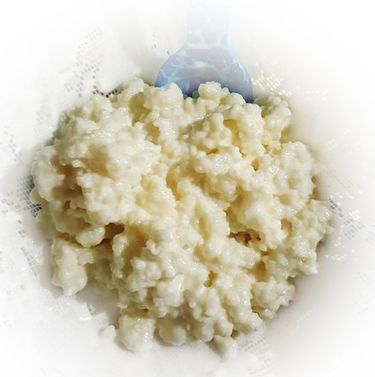
But just what are the Milk Kefir Grains?
Kefir grains are microbially derived protein and polysaccharide matrices that contain cultures of bacteria and yeast that are essential to Kefir fermentation. The bacteria found in the grains depend of several factors, including the Milk used during fermentation, the fermentation process itself, and even the region where the grains originate from. Mainly comprised of Lactobacillus, common bacteria strains include: Ref 1, Ref 2, Ref3 Lactobacillus acidophilus, Lactobacillus brevis, Lactobacillus casei, Lactobacillus delbrueckii subsp. bulgaricus Lactobacillus delbrueckii subsp. delbrueckii, Lactobacillus delbrueckii subsp. lactis, Lactobacillus helveticus, Lactobacillus kefiranofaciens subsp. kefiranofaciens, Lactobacillus kefiri, Lactobacillus paracasei subsp. paracasei, Lactobacillus plantarum, Lactobacillus rhamnosus, Lactobacillus sake, Lactococcus lactis subsp. cremoris, Lactococcus lactis subsp. lactis, Lactococcus lactis, Leuconostoc mesenteroides subsp. cremoris, Leuconostoc mesenteroides subsp. dextranicum, Leuconostoc mesenteroides subsp. mesenteroides Pseudomonas, Pseudomonas fluorescens, Pseudomonas putida, Streptococcus thermophilus Yeast Strains: Candida humilis, Candida Kefyr, Kazachstania unispora, Kazachstania exigua, Kluyveromyces siamensis, Kluyveromyces lactis, Kluyveromyces marxianus, Saccharomyces cerevisiae, Saccharomyces martiniae, Saccharomyces unisporus, Debaryomyces hansenii, Dekkera anomala, Torulaspora delbrueckii, Pichia fermentans, Saccharomyces turicensis, Issatchenkia orientalis and Debaryomyces occidentalis. Depending on what milk you use and on the quality of the Kefir grains, Kefir can contain anywhere from 1 billion to 10 billion CFU of bacterial/yeast probiotic per ml (cc). That is 5-50 billion CFU per TSP! It is important to note that Kefir grains, unlike the name suggests, are very much alive, and as such must be taken care of.... As any alive being, it must be fed - but what does it eat? That is the beauty of it: LACTOSE! In kefir, lactic acid bacteria are primarily responsible for the conversion of the lactose present in milk into lactic acid, which results in a pH decrease and milk preservation. Other kefir microbial constituents include lactose-fermenting yeasts that produce ethanol and CO2. Non-lactose fermenting yeast and acetic acid bacteria also participate in the process. After each fermentation "batch", the grains biomass increase in about 5-7%, which is why the bacterial/yeast composition varies according to the milk and process used for fermentation. Unlike the original days, the methods used to produce Kefir at home today differ in several ways. Of course no one is leaving a goat skin bag full of milk by the door to be pounded at, for one! Today Kefir is mostly made in glass jars, kept out of the sunlight to preserve the most amount of vitamins as possible. With that, comes one issue - The grains only feed what they can touch. While some will instruct to pour the milk over the grain in a jar, loosely cover it with a cheese cloth or a plastic lid, put the jar in the cabinet and forget about it for the next 24 hours, I beg it differ. By gently mixing the Kefir every so often you are making sure the grains are evenly distributed, therefore more lactose will be consumed, achieving a more thoroughly fermentation process. This is specially important for cats, which are mostly lactose intolerant. Another way of decreasing the amount of lactose is by doing what is called a "double fermentation" - you simply strain the Kefir after 24 hours into a clean jar, this time closing the lid, and place it into a dark cabinet for another 12-18 hours. The whey will completely separate from the curd, but a smooth texture can be achieved by using a blender. Not only Kefir is virtually lactose free, but studies show that Kefir can actually actually improve lactose digestion and tolerance overtime. The benefits are countless - not only Kefir is a powerful, natural, live probiotic, but it also: In multiple studies, consumption of kefir or kefiran in an animal model has been associated with an increase in microbes thought of as beneficial, such as Lactobacillus and Bifidobacterium, while simultaneously decreasing harmful microbial species such as Clostridium perfringens (1, 2), Reduces the severity of Giardia , inhibits the adherence of Salmonella typhimurium and E. coli, 1, 2, 3. Kefir has shown a multitude of antibacterial and anti-fungal activities and has been tested in disk diffusion experiments against a wide range of pathogenic bacterial and fungal species, found to have antimicrobial activity equal to ampicillin, azithromycin, ceftriaxone, amoxicillin, and ketoconazole (Cevikbas et al., 1994; Yüksekdağ et al., 2004; Rodrigues et al., 2005; Huseini et al., 2012). Kefir also has anti-inflammatory and healing properties, and was effective in postoperative treatments and in patients with gastrointestinal disorders. Several studies have shown Kefir to have anti-carcinogenic effects 1, 2, 3, and can also act as an anti-oxidant. But one of the major ways probiotic products such as kefir are able to produce health benefits is through the modulation of the gastrointestinal immune system. Kefir has shown in studies anti-allergenic and anti-asthma properties, is capable of decreasing the levels of blood glucose, improving the symptoms of constipation, among many other health benefits. It's important to note that the quality of traditional kefir is mainly influenced by the microorganisms present in kefir grains and kefir processing conditions. Although scientists and food companies attempted to develop a commercial “kefir-type” beverage produced by different cultures and mesophilic and thermophilic lactic acid bacteria, or even pure cultures isolated from kefir grains, their success when compared to traditional kefir is limited. It is suggested that this limitation is due to the microbial diversity present in kefir grains and their interactions, which can determine the probiotic and therapeutic properties of final product, as well as peculiarities conferred by certain minority groups present in different grains. How do you acquire Kefir Grains? Kefir grains are passed on from friends or family, or can also be bought online in sites such as Amazon. When consuming Kefir, you are drinking history! Think about it - you can't just create those grains out of nowhere.... They have been passed around from one person to another, until that they got to you! And the beauty of it? Every time someone used a different milk, a different processing method, temperature, etc - the microbioma in the grain has changed! You will notice that once you start making kefir on a regular basis, your grains will start multiplying exponentially - that's why they are passed around. What else can you do with them? You can eat them - they are just about the most potent probiotic you can get your hands on! Feeding Kefir to your Pets: We cannot stress enough the need to start SLOWLY. And we mean VERY slowly. Kefir is a very potent probiotic, with many substances your pet has never consumed. Dosage: Give a teaspoon to a tablespoon of kefir to small cats or small dogs a day. Medium size dogs – 1 – 2 tbsp. Large dogs – 2 – 3 tbsp. ***Cats specially: Start with 1/8 tsp, and increase every FEW days by doubling the amounts. Give your cat only 1/2 of the dosage for at least one to two weeks before increasing to 3/4 and so on. If your cat has any reactions to Kefir, you can try two things: 1- Do a double fermentation - still reacted? 2- Change the milk for goat milk - still reacted? Stop giving it. I personally had a cat react to kefir, to both Regular Cow's milk and Raw goat milk. I am giving him a break and will try a very slow introduction later on. My other cat seemed to react when I increased the kefir to 1/2 tsp per meal, however the problem was solved with a slower introduction, and a double fermentation. She is also ok with Goat Milk Kefir. I have substituted my cats', mine and my dog's store bought probiotic for Kefir, and everyone is doing terrific! Kefir has been the perfect addition to the kitties' EZComplete diet - how would it not be with so many wonderful properties? YES! Pork is a wonderful meat for cats. Most cats both love pork and do very well with it. At Food Fur Life and in our Raw Feeding for IBD Cats group we often recommend pork loin as a starter meat when introducing raw food to cats. For many it is essentially a “novel” protein. Of course it should be introduced properly and slowly as with any new food or new protein in a raw diet. An excellent source of taurine, pork is a healthy addition to any homemade food protein rotation (though we'd like to note the more electrically active muscles will always have much higher concentrations, e.g. tongue, lung, heart and the dark meats - in pork, being the shoulder). The most maligned meat, many of the myths and misconceptions surrounding the feeding of raw pork are simply outright misinformation; others are outdated health concerns. Let’s address those myths and fears. They are:
Of course, when we say pork is a wonderful raw meat for cats, we do not mean bacon or ham. Salted or smoked meats should never be fed to any pet, due to the sodium content, smoke flavoring chemicals, nitrates and potentially preservatives. But cuts of pork meat: loin, boneless rib meat, butt, shoulder – these are all excellent sources of protein and should be welcomed in any healthy meat rotation in a raw diet. With moderate fat, and low in saturated fats compared to other red meats, pork truly is “the other white meat.” So put your fears aside, and let your kitty enjoy this nutritious protein in its natural state. Let’s face it - very few humans would intentionally choose to eat only dry cereal or only canned stew, even if they were designed to meet all of our daily nutritional requirements. No matter what flavorings were added, most of us would, at some point, crave an apple, a fresh juicy peach or pear, or a cold, crisp salad. Many of us badger ourselves to eat better, and we strive to eat more fresh foods - or at least just not eat as many convenience foods. And if we don’t? Our doctors encourage us to eat more fresh food. We know the more fresh food we include in our diet, the healthier we are, the more energy we have, and the better we feel. We also know that even if we had a power bar for breakfast and fast food for lunch, if we have an apple as a snack, it is better than not eating that apple at all. The same holds true for our cats. Some fresh meat is better than none! Kibble and canned food for cats is convenient. That's what it is for. Our convenience. Just like bagged or canned foods for humans are called "convenience foods." And convenience foods are not the healthiest food choices for us. Just as convenience foods are not the healthiest choices for our cats. But we lead busy lives, and convenience foods make feeding our pets quick and easy; even though it's not what is best for them. And we know this. But when considering a healthier diet for our cats, most of us got – or get – overwhelmed. It is… Too difficult Too time-consuming Too expensive And some of us get to the point of almost hyperventilating by the time we’re wondering things like What meat do I buy? Where do I buy it? How do I store it? Do I need more freezer space? How do I make sure I get it right? Am I going to harm my cat????????? But you know what? It doesn’t have to be all or nothing. At least at first. You don’t have to commit to feeding your cat only homemade food right off the bat. ANY amount of fresh meat you add to your cat's diet is better than none. No need to fret at all. You can start really small. Baby steps! (Even just a slice of apple is better for you than none at all!) If you’re not a vegetarian, and you make meat-based dishes for your family, you’ve already got everything you need to start. Next time you make a meal with meat, just slice off a little bit before you season it. That’s all there is to it to get started! It really IS that simple. You’re holding a tasty, healthy treat for your kitty. When is plain meat is no longer a treat? When the amount you’re giving your cat approaches 10% of the total diet. When it's more than 2 or 3 bits of meat treat a day. Yes, at that point you need to balance that meat to make it a nutritionally complete food. You might want to consider Food Fur Life as a solution for that. EZcomplete fur Cats makes that part quick, easy, and worry-free, allowing you to prepare balanced and complete homemade raw meals in a few simple steps. But please know that even if you’ve moved to balancing the meat, you still don’t have to commit to feeding it full time right away. One meal a week? Two? Three? In fact, we expect that no matter how much you’re able to incorporate, you’ll want to find ways to include more. You’ll see the difference. No matter how little or how much, fresh food will benefit your cat. At that point, feeding more homemade food won't seem so overwhelming. And with the ability to use the supplement with chunks or ground, and to make the food with more water for gravy – or with just a bit of water to make it stick to the meat – your complete and balanced nutritionally complete food made with EZcomplete is actually ideal for snack-style or intermittent feeding. If you’ve been considering ways to improve your kitty’s diet, there’s no reason not to just jump right in. No logistics needed. As Dr. Lisa Pierson’s Andy says on catinfo.org … 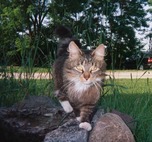
(Laurie here)
I don’t know about you, but our very first cat adopted us. She let us think we chose to feed her, that skinny, matted stray raiding the garbage. And it was a triumph when after months Booger allowed us to groom her. Of course we let her in when she decided our home was hers! ...Of course, we also let her back out when the thunderstorm passed. She insisted. Loudly. 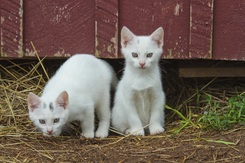
Given the first records of the domestication of cats dates back to when humans were first settling down to farm, it’s easy to imagine both human and cat enjoying the benefits of proximity, isn’t it? They’re magical, entertaining creatures, cats are. And they protected the farmers’ grain stores from rodents. It was a win-win! We’ve been companions ever since. Cats traveled the globe with us. Literally, as it turns out.
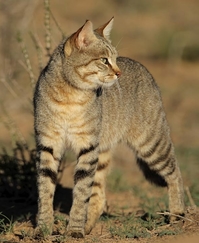
It came as quite the surprise when a research team led by geneticist Carlos Driscoll of the National Cancer Institute and scientists at the University of Oxford in England decided to trace the origin of domestic cats – and found that every single one of the 979 cats included in the project from around the world were “virtually indistinguishable” from the African Wildcat at the genetic level. That’s right, that purring, kneading bundle of soft, silky fur, born under different circumstances, could be just as at home stalking prey on the great plains of South Africa.
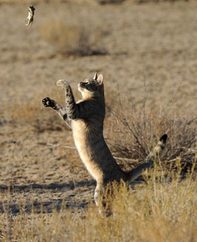
Many assume the influence of living among humans would have had an impact on what cats have the ability to eat and use for sources of energy and nutrition, as appears to the be case for dogs. Nope. Not so. Not at all. Despite their proximity to humans for at least 10,000 years, cats retain their unique anatomic, physiologic, metabolic, and behavioral adaptations consistent with eating a strictly carnivorous diet. That is to say that cats, to this very day, remain obligate carnivores. By their genetic makeup, cats must eat the tissue of other animals in order to thrive.
Our kitties delight us with their playful antics well into old age. And as we’ve brought our cats indoors full-time, we find that to keep them happy and fit, we have to engage them in interactive play. What we are witnessing is their prey drive. That seemingly kitten-like, playful behavior we enjoy from birth to death in our furry friends is unique to cats: their prey drive is not dependent on hunger. They are so hard-wired to hunt and engage prey, they don’t need to be hungry to “play.” 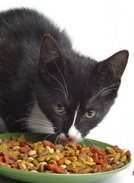
In fact, cats are such highly specialized hunters it is absolutely critical to their long term health that we understand cats are a metabolically inflexible carnivore. What does that mean? Well let’s find out.
Since moving indoors full-time and becoming completely dependent on us for food, what has happened? We need convenient food with our busy lifestyles. And most of us do not intuitively understand what cats need – they seem like little aliens to us. They certainly did to me. We ask our vets. And many of our vets tell us that for dental health, cats need kibble, that to mimic their "natural" pattern of eating many small meals (being hunters of small mammals), we should leave the food out. We didn't know any better, and we trusted our vet to know what’s best for Booger. Or we free-feed kibble to our kitties, because that’s what and how our parents fed our cats when we were growing up. So 80% of us go to the store and buy a bag of kibble, come home, and pour it into a dish we keep full for Boots, and Socks, and Tigger. …except cats evolved eating moisture-rich food in the desert. Kibble has virtually no moisture – and cats do not have a thirst-drive that keeps them properly hydrated. This is a clash of momentous impact: The number one reason for a vet visit by cats is bladder or urinary tract problems – usually crystals and life-taking or life-threatening urinary tract blockages –problems that need not exist if we feed a moisture-rich, fresh meat-based diet. Cats, not designed to use all those carbs, grains, or starches in their food, not designed to derive needed protein from non-meat-based sources, experience kidney disease at a rate of seven times more than dogs. And our kibble fed cats, chronically dehydrated, die most frequently from kidney disease, the number one cause of death in cats over the age of five. Yet in the face of this, many of our vets STILL tell us our cats need to eat some kibble for dental health. But 85% of cats over the age of three years have dental disease. What the…. ????? How can they not notice this dichotomy? So we put down that bowl of kibble for kitty to “graze.” Except cats aren’t herbivores. Cats shouldn’t graze. Allowing cats to graze has resulted in a problem of “epidemic proportions." 58% of our cats are either overweight or obese – an increase of 90% over the past five years. So now we have fat cats. And that means that 67% of our cats have arthritis. And being fat increases the risk of diabetes by 300% - 500% - so it’s shouldn’t be surprising that the incidence of diabetes in our cats has DOUBLED in the past five years. 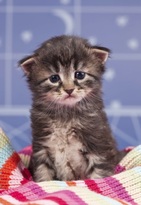
In fact, THREE of the top 10 reasons for vet visits by cats in the past several years are related to digestion. Our cats suffer chronic vomiting, diarrhea, and now full-blown Inflammatory Bowel Disease.
Are you crying yet? At Food Fur Life, we are. What are we doing to our cats? How has this happened? Pet food marketing and lack of industry regulation or real oversight. As outlined above, the problems seem as if they are related to only kibble. But no, the problems are not limited to just kibble. Moisture-depleted, ultra-processed crunchy food made from rendered ingredients is certainly more problematic than canned or pouched cat food. Species-inappropriate ingredients are most certainly a culprit: forcing our cats to eat what nature didn't build them to use as a source of nutrition or energy clearly has a hand in our cats' health problems. But the issues extend far beyond processing and non-meat-based ingredients in our cats' food. That said, issues with ingredient quality (despite the marketing that would have us believe otherwise even in expensive foods) and the use of additives and diseased animals (even in canned food) with most canned and kibble commercial cat foods are beyond the scope of this post. The problems are staggering and seem almost unbelievable when we first start learning about them. Ann Martin describes them in her book, Foods Pets Die For: Shocking Facts about Pet Food. Dr. Elizabeth Hodgkins, former Director of Technical Affairs at Hill’s Pet Nutrition, co-authored the book Not Fit for a Dog: The Truth About Manufactured Pet Food. And Carolina and I got our first introduction to the problems in the pet food industry with a paper written by a Harvard Law student, “Deconstructing the Regulatory Façade: Why Confused Consumers Feed their Pets Ring Dings and Krispy Kremes.” Bottom line? The health problems sooooo many of our pets are experiencing are DIRECTLY related to the diet we feed them. And we can change that.
Fresh Food for Our Cats: It’s Just Common Sense!
We have been told that feeding a fresh meat-based diet to our cats is dangerous. Of course, many veterinarians do support the idea of feeding our cats a species-appropriate, fresh meat-based diet – in theory. Seeing the impact of improperly made homemade diets, many vets are fearful of recommending it, and understandably so. But with the advent of commercially available balanced raw foods for cats, and with a supplement like EZcomplete fur Cats that makes it so easy to provide complete and balanced homemade food – what’s stopping us? Think of a fresh food diet for our cats like this. As the title to this section says, it just takes a bit of common sense. How old is your cat? Three years? Five? Seven? Nine? Eleven? At three years old, your cat is the equivalent of 28 human years. At five, your kitty is the equivalent of 36; At seven, your cat is the equivalent of 44; At nine, that is an equivalent of 52; At 11, your kitty is the equivalent of 60 human years. Even if you don’t eat the healthiest diet, can you imagine never – never, ever – having eaten an apple? An orange? A salad? for 28 years or 36 years or 44 years or 52 years - or for 60 years? That's what we are doing to our cats by never, ever feeding them any fresh meat (which is not a balanced diet) EVER. And I'm not talking about the slice of deli ham that Bella stole, or the bit of barbequed steak that dad slipped to Muffin. I mean fresh, raw meat. A slice of chicken breast. A bite of chicken liver. Yeah - it takes more work than that to make a balanced diet. But don't you feed your kitty treats? We don't worry those are going to cause their diet to become unbalanced. There's no reason not to slice off a bite of chicken breast before you season it and bake it, the next time you're cooking chicken for dinner, and offer that to Smokey as a treat instead that stuff in a bag or bottle. Got another one for you. Pretend you’re an astronaut, and have been on the space station for nine months. All you’ve eaten is food squished out of a packet. When you land, what are you craving? Dry cereal? Canned stew? Probably not. Our doctors, our government tell us that we need to eat fresh food. We need 2-4 servings of fresh fruit per day. We are advised to eat 3-5 servings of fresh vegetables each day. And yet we expect our cats, designed to derive ALL of their needed nutrition from ONLY small animals, to thrive on the most highly processed food there is, full of carbohydrates. And even if “real meat” is advertised as the number one ingredient in that food, the moisture was sucked out of it before it gets to your cat. Even many canned foods highlight their inclusion of "healthy" peas and carrots, cranberries or blueberries, or that they include corn gluten meal to reduce their urine pH. Ummmm... did we forget? Cats aren’t out there eating the grain stores of farmers. They eat the mice that eat the grain. Cats aren’t out there raiding the vegetable garden. They eat the rabbits that raid our gardens. Cats aren't out there snacking on blueberries. They eat the birds that eat the berries. Cats aren’t out there roasting their mice, either. In fact, a 2008 review of research on pancreatitis in cats by Texas A&M noted a study where post-mortem biopsy of 115 cats (both sick and healthy cats) discovered findings consistent with chronic pancreatitis in 67% of the cats – including 45% of “apparently healthy” cats. Please read that again. Is your mind blown? If not, read it one more time, please. Dr. Jean Hofve, in her article on the importance of enzymes, published in IVC Journal, shares why that may be. Cooking food kills the naturally occurring enzymes that aid digestion. Many of our cats may literally be suffering from eating cooked, highly processed foods, as pancreatitis, in 2015, made the Top 10 list of health insurance claims. What Happens When We Feed Our Cats A Balanced Raw Food Diet? So what happens when we feed our cats a diet modeled on the food they are meant to eat? When we employ a little common sense, and realize that if we thrive on fresh, whole foods, our cats will also thrive on their equivalent – a fresh, properly balanced, animal tissue-based diet?
Raw feeders also report less shedding, behavior changes (aren’t you less grumpy when you eat fresh foods vs when you’ve been on a carb or sugar binge?), more energy (yes, you will have to play with your cats more!), a cessation of itching and overgrooming – and even improvements in asthma. Mother Nature Knows What Cats Need WHY do we think we need to “improve” upon the diet cats are born to eat? WHY do we need studies that show us cats *can* eat grains, starches, pulses, and legumes? That cats *can* eat plant-based proteins or derive some energy from carbs SHOULD be moot. If we put diesel oil into our gas-powered cars, should we expect them to run properly? No, feeding a balanced raw diet doesn’t cure everything. But when we get over our fears and feed our cats a balanced diet featuring food their bodies NEED, we rapidly see the changes. Yes, rapidly. Often it seems like magic. Of course, the longer the problem has occurred, the more time it can take to resolve. Sometimes there is significant damage. Fortunately, for many cats like Carolina's Bugsy, all they need is raw food. Bugsy had 14 months of diarrhea (despite following veterinary advice and protocols), and it immediately cleared up after eating his first meal of 100% raw food. That journey is recorded here. Problems we took for granted as being “that’s just my cat” go away. Yes, it is a lifestyle change. To continue to reap the benefits for the furry members of our family, we need to continue to feed them like the cats they are. And we SEE the difference between our cats just surviving – and our cats truly thriving. Of course, at Food Fur Life, we help make feeding your cat a complete & balanced, healthy, fresh, raw meat-based diet quick, easy and convenient. Buy meat. Add supplement and water. Feed Cat. It really couldn't be easier than with EZcomplete fur Cats. ...and these are happy tears. No more pancreatitis! 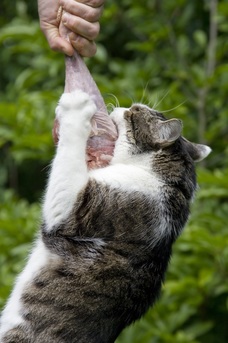
Why are our cats in so much gastric distress?
According to VPI Insurance, digestive issues in cats (both vomiting and diarrhea) are consistently ranked as one of the top reasons for a vet visit. Inflammatory Bowel Disease joined them on the list of top 10 reasons for a vet visit each the past two years. This makes three of the top 10 reasons for vet visits related to GI problems in our cats. According to Dr. Gary Norsworthy, who led a study of chronic vomiting in cats, it is so frequent (present in 73% of cats with small bowel disease), many veterinarians and cat owners simply write-it off to
What the heck is going on? When we have a young child, we would never accept from a doctor that chronic vomiting is because our child is "just a puker." We would never accept that chronic diarrhea is "just how some kids are." What is Feline IBD? Let’s start with what Feline IBD (Inflammatory Bowel Disease) is. Like that in humans, IBD is a group of diseases involving mild- to severe gastrointestinal (GI) inflammation, and it can lead to lymphoma. This inflammation has been definitively linked to gut dysbiosis (bacterial imbalance in the GI tract). Technically an autoimmune disease, IBD was thought to have a genetic component, but recent research has discovered that the process that triggers IBD is actually transmissible. GI motility problems (vomiting, diarrhea, constipation) can both cause and be exacerbated by a bacterial imbalance. In IBD, that imbalance has caused inflammation that often impacts nutrient absorption (which is why seeming unexplained weight loss can occur, and why B12 and folate blood serum levels are part of the diagnostic process). In IBD, the symptoms that present are related to where in the GI tract the inflammation is located. Symptoms can come and go, often in cycles of frequent vomiting or a period of diarrhea – which is why the symptoms so often go improperly diagnosed. Treatment and Management of IBD: Traditional IBD Management Does Not Address the Underlying Cause The typical approach is for vets to have pet parents use “prescription” diets for sensitive stomachs / high fiber diets for hairballs / hydrolyzed “hypoallergenic” diets, or “limited ingredient” diets and to prescribe goop for hairballs, antacids for stomach upset, and/or anti-emetics (metoclopramide [Reglan], maropitant [Cerenia], ondansetron [Zofran]) to stop the vomiting and nausea; steroids to control inflammation; and Flagyl (metronadizole) to control diarrhea. As Dr. Norsworthy says, “often there is improvement in clinical signs, but rarely are they completely relieved. In addition, the improvement often diminishes over time.” Unfortunately, this traditional treatment of Feline IBD does not address the underlying cause, it treats the symptoms. Not surprisingly, it has been shown that diet is directly related to the gut microbiome in humans: this holds true for cats, too. Healing of the GI tract can only begin by recognizing our cats as the obligate carnivores they are. Feeding them species-appropriate food that supports their proper intestinal pH and bacterial populations is imperative to long term healing. Diet is the Foundation of Health: this is critical for IBD in cats While it is incorrect to say that a raw diet “cures” Feline IBD, feeding cats the high quality, human grade, fresh meat-and-organ based diet their digestive systems are designed to metabolize enables those systems to return to physiological balance - and when combined with appropriate human grade probiotics to restore healthy intestinal bacteria that has been damaged by many factors apart from diet (including antibiotics, dewormers, vaccinations, stress, etc.) many cats experience healing of the inflammation caused or aggravated by commercial (including "prescription") diets and the alteration in their microbiome. The evidence is only anecdotal at this point, but far too many cats transitioned to a raw diet see their symptoms of IBD (whether vomiting or diarrhea) clear up almost overnight. Notably, the All Feline Hospital says they “started trying commercial raw food diets with amazing results” (in cats with IBD). They further state “We have had cats with confirmed by biopsy IBD that had severe IBD and significant symptoms that had to be on very high doses of steroids just to have some quality of life. Many of these cats had a complete reversal of signs and symptoms by going to an exclusively raw food diet, and were able to either come off of all medications, or at the very least, drastically reduce their medications.” (Bold, our emphasis) Food processing, the use of thickeners, high temperatures, species-inappropriate foods containing even medium amounts of carbs and/or starches), dry vs wet foods vs raw, protein content – all of these things impact feline gut microflora and thus motility and inflammation in our cats. This means that to best help our kitties heal, we need to feed them the food they were meant to eat: a diet based on fresh, raw, high protein food. (Raw is preferable to cooked, but cook it if you are not comfortable feeding raw: fresh, unprocessed, truly human grade meat and organs – a food with no unnecessary additives – is still better than highly processed food, no matter the perception of quality). Of course, with EZcomplete fur Cats, it is – well – really easy to feed fresh homemade food – and IBD cats are thriving on it. For more information on the treatment and management of IBD in cats, please visit the website Raw Feeding for IBD Cats. This blog post has been added to the growing collection of educational articles provided by Food Fur Life, LLC Raw Feeding and IBD in Cats
Feeding multiple cats with EZComplete is easy!
I made a little video of how I make my "meal batches". I don't freeze my batches, but you can if you prefer... Just remember to do so ***before adding probiotics*** This is not a fancy video... It's just a video of our daily feeding routine :D To calculate the amount of powder for any quantity, multiply the Meat weight in Oz x 2.5 and divide by 1.5. On this case: 13.5oz*2.5/1.5=22.5g Also - you don't need to add extra Egg Yolks to EZComplete - I only do it during hairball season as my cats are all very long haired and with two suffering from IBD, they have a hard time during this time of the year. You can read more about how to manage hairballs in this article. Hope this is helpful! Carolina The review below was posted on our Facebook page by a very satisfied customer who for many years tried to help her little baby anyway she could for no avail. It fills our hearts to know EZComplete helps kitties like Susan's when nothing else would. THAT is why we created Food Fur Life - THAT makes it all worth it! <3 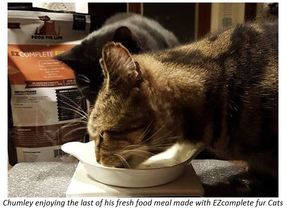
Pet food industry data is quite clear - Americans want healthier food for their pets. According to GfK, retail sales of raw freeze-dried foods for cats and dogs jumped 64% from $25 million to $40 million, and sales of raw frozen pet food jumped 32% from $52 million to $69 million last year. And it is pet parents driving - demanding - the change. Allprovide, a raw pet food company in Norcross, GA, conducted a survey of cat and dog owners across the U.S. on their pet food preferences, knowledge and interests. 1,826 owners were polled, and according to the company, the results show that "more than 37% of pet owners are interested in a fresh, healthy raw food diet for their pets," and an astounding 55% of pet parents would prefer to give their pets fresh food that can be served naturally or cooked. !!!!!!!! The full results of the study show:
Labeled the "natural food craze" and reduced to the "humanization of pets" by Pet Food Industry articles, with allergies, diabetes (in cats), ear & skin infections, lower urinary tract problems/bladder infections, diarrhea/vomiting/intestinal upset - and in cats, inflammatory bowel disease and/or pancreatitisamong the top 10 reasons for vet visits by cats and dogs is it ANY wonder pet owners want to feed their pets FRESH meat-based, grain- and filler-free foods? Foods on which these species have thrived through millennia? In fact - the evolutionary diet on which they thrived until they moved inside and became dependent on us. With research in human health linking processed foods to the development of autoimmune disease, we consider the desire to feed minimally processed foods to our pets as well as to our families simply common sense. |
Archives
August 2021
Categories
All

|
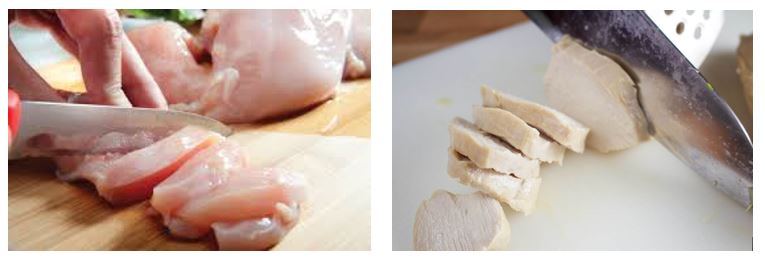

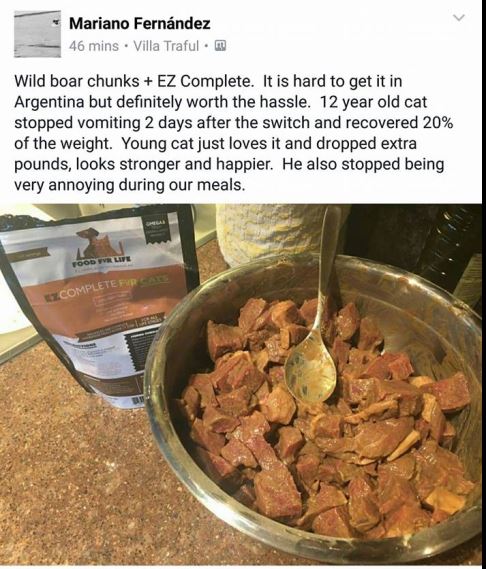
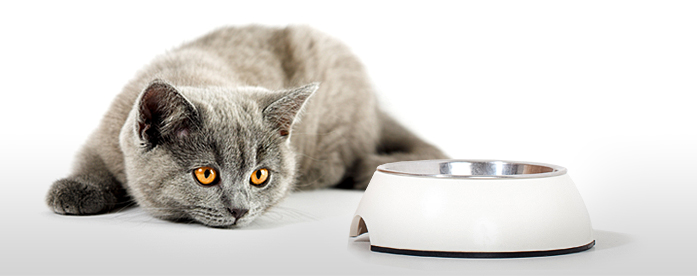
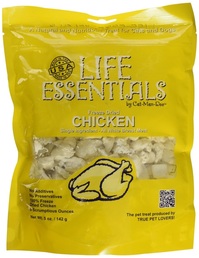
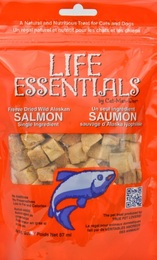

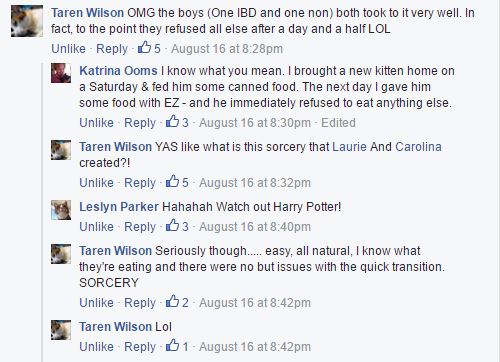
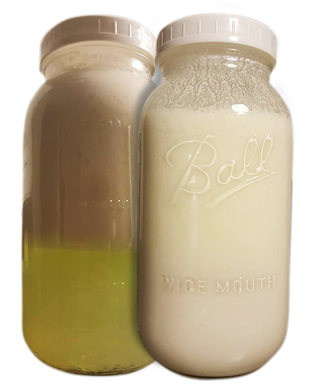

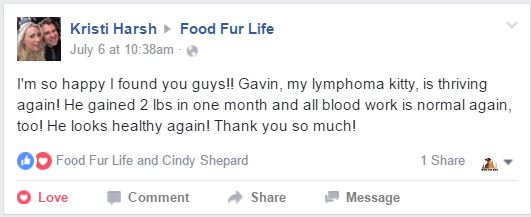
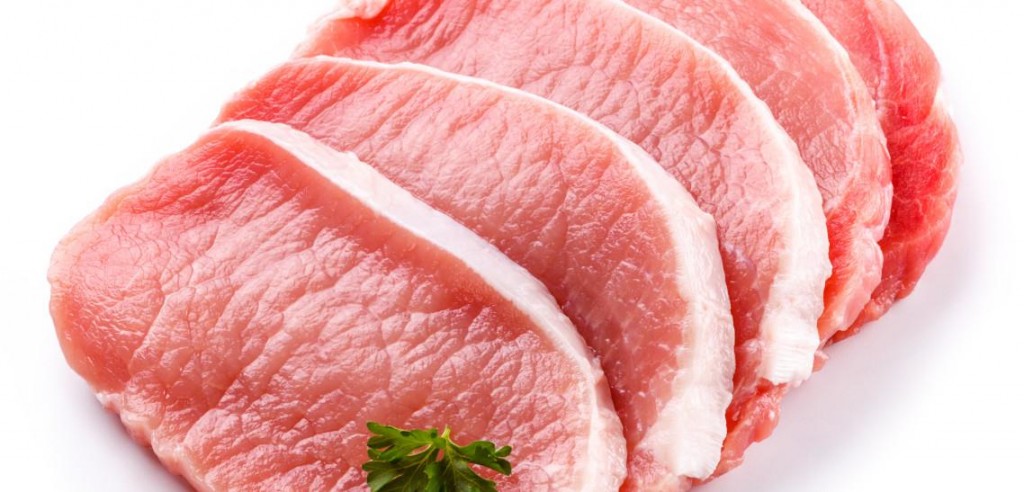
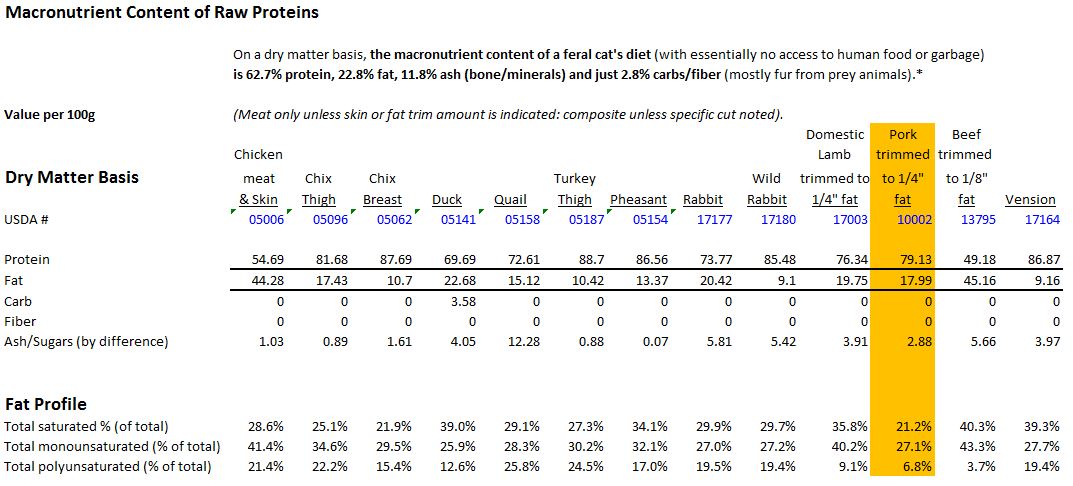

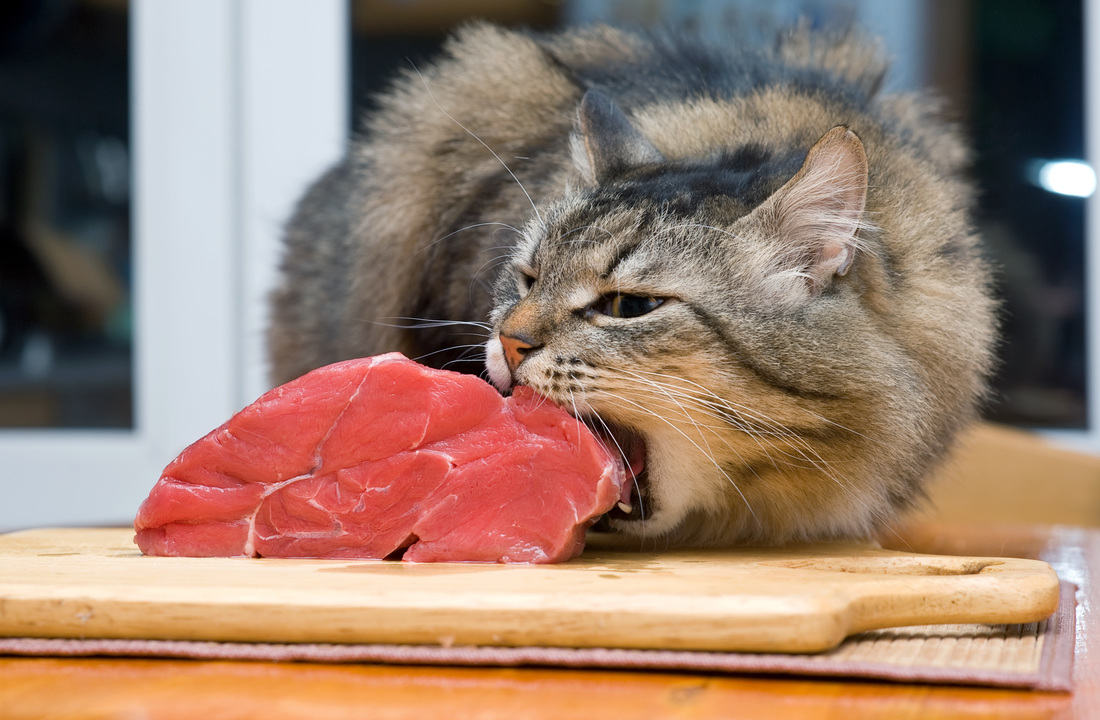
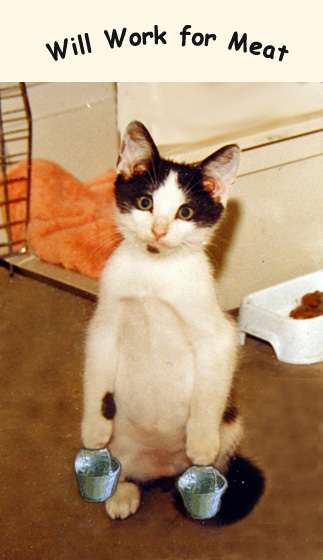

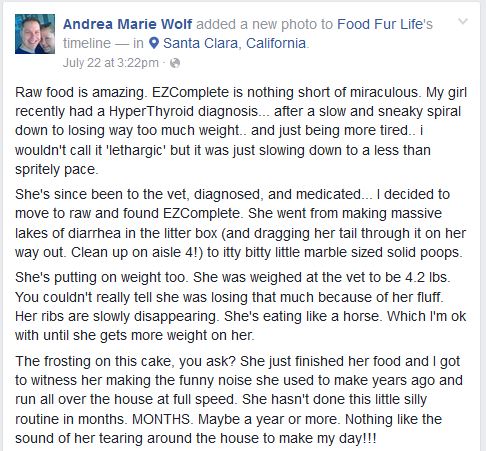
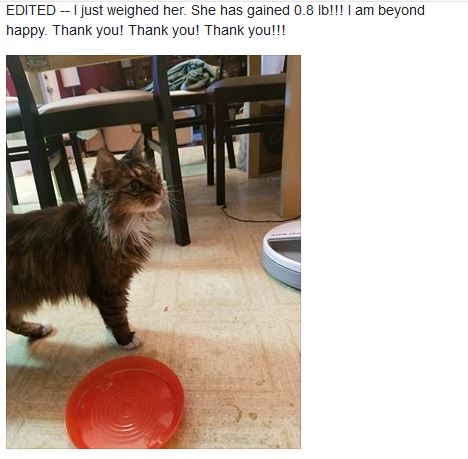

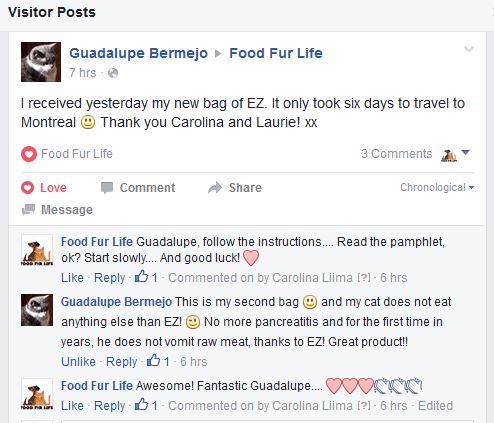

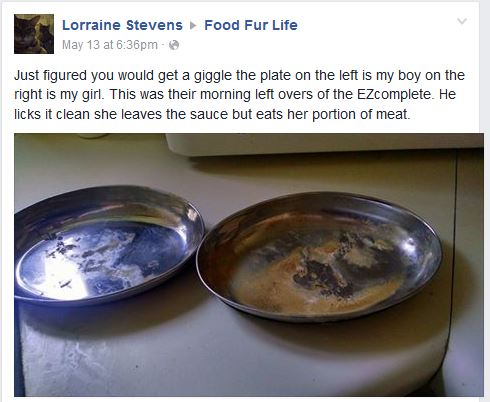
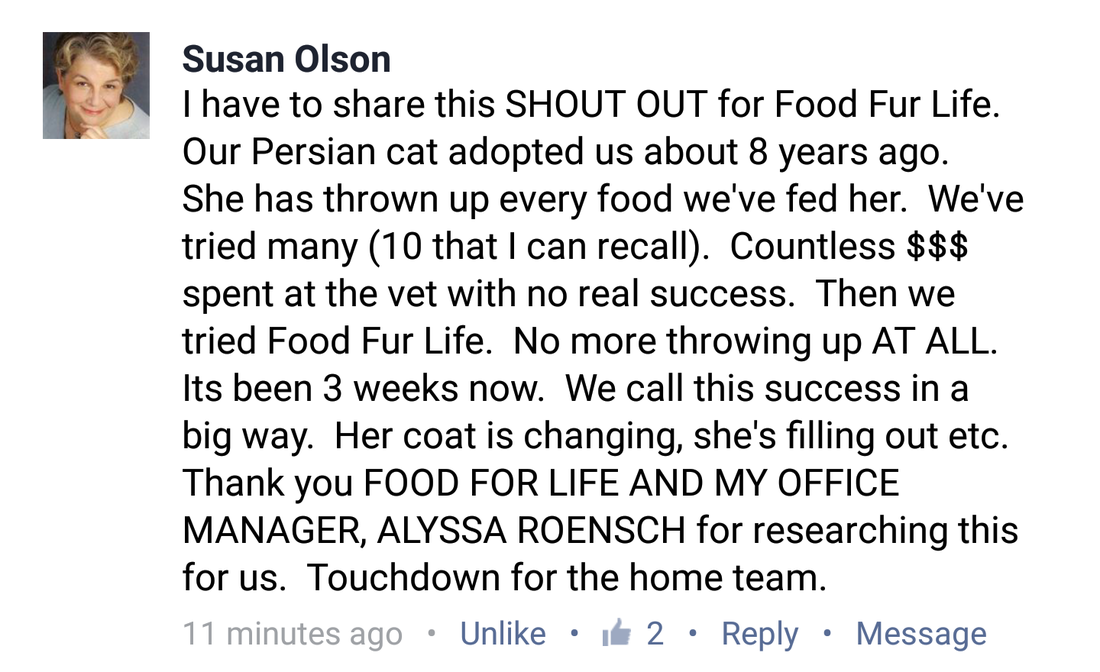
 RSS Feed
RSS Feed